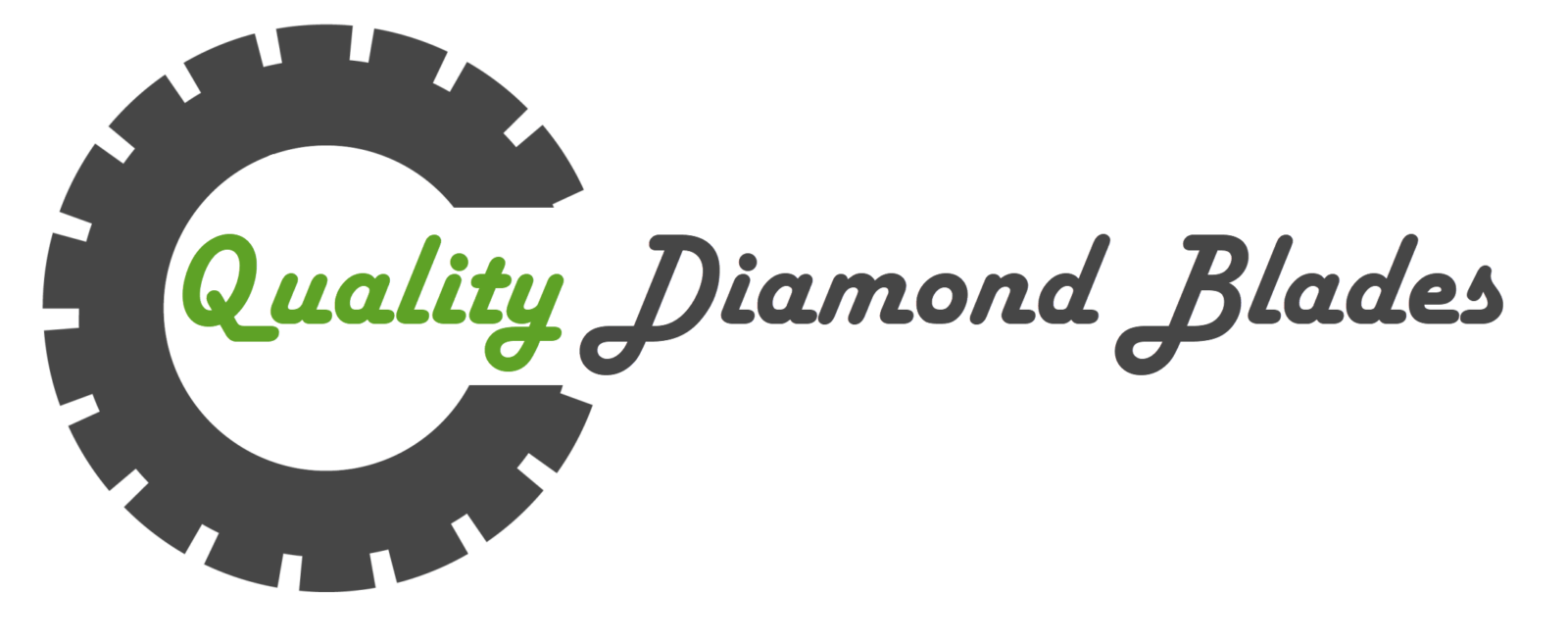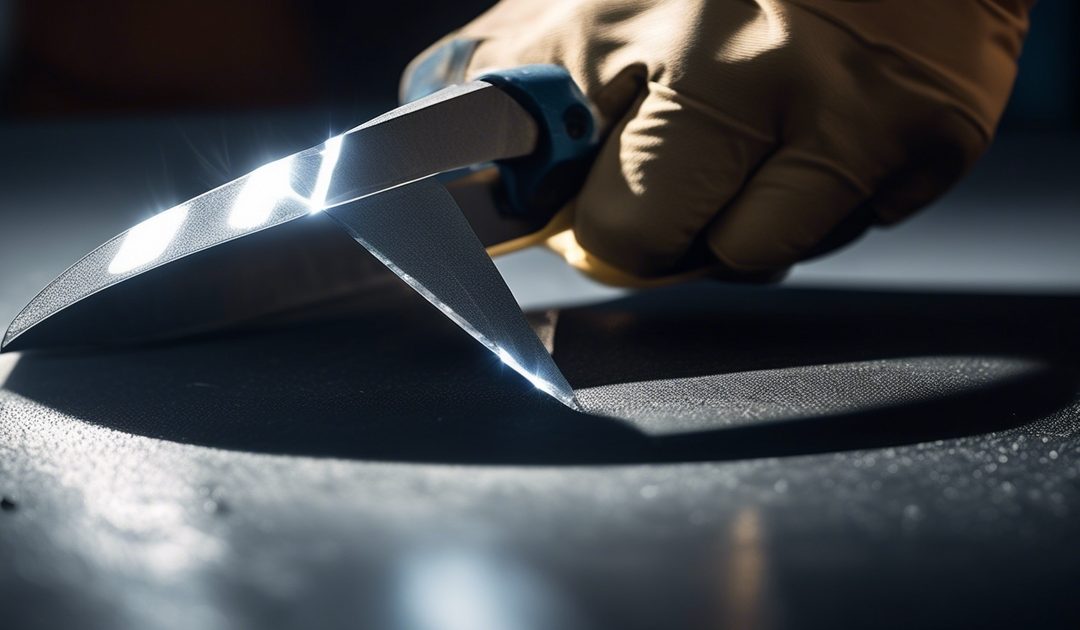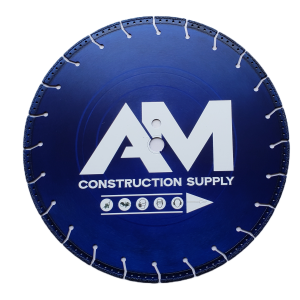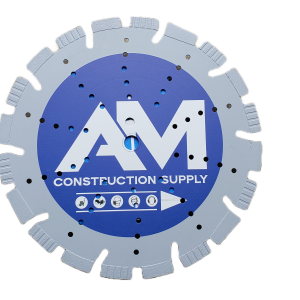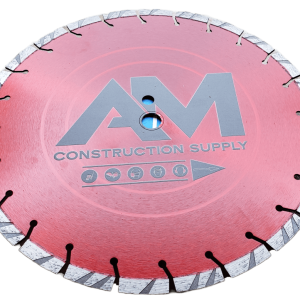When working on projects that involve cutting hard materials like concrete or stone, the durability of a diamond blade is crucial. Understanding whether a diamond blade will break during use can save time, money, and prevent potential safety hazards. From material composition to proper usage techniques, every aspect including diamonds will be covered to ensure that you have all the information needed to make informed decisions when using diamond blades for your cutting needs.
Key Takeaways
- Properly understanding diamond blades and their common issues can help prevent breakage.
- To prevent diamond blade breakage, it’s crucial to use them correctly and follow proper usage guidelines.
- Enhancing the durability of diamond blades through regular maintenance and care can significantly reduce the risk of breakage.
- The significance of diamond blades lies in their ability to efficiently cut through hard materials, making them valuable tools for various industries.
- Troubleshooting diamond blade issues promptly can prolong their lifespan and prevent breakage, ensuring smooth and safe operations.
- By implementing these actionable insights, users can minimize the risk of diamond blade breakage and maximize their efficiency and longevity.
Understanding Diamond Blades
Composition and Design
Diamond blades are made with various types of metal cores. The arrangement and quality of diamond segments impact cutting performance. For example, a blade with closely spaced diamond grit segments is suitable for cutting hard materials like granite or concrete, while a blade with wider gaps between the segments is ideal for softer materials such as asphalt.
Different designs cater to specific cutting applications. For instance, continuous rim diamond blades are designed for making clean cuts in ceramic tiles or porcelain. Segmented rims have spaces between the edges of the rim to allow better cooling during operation, which makes them perfect for dry cutting applications.
Functionality Explained
Diamond blades work by grinding through materials rather than cutting. When in use, the bond between diamonds and the matrix determines cutting efficiency—a harder bond ensures prevention of slower erosion of the segment’s edge but may lead to slower cutting speeds.
The segmented rims on diamond blades play a crucial role in prevention and their functionality. They allow air flow that helps keep both the blade and material cool during operation. This prevents overheating and can extend the life of both your tool and your material.
Common Diamond Blade Issues
Broken Segments
Diamond blades are susceptible to broken segments due to improper use or hitting hard materials, prevention. When segments break, they reduce the blade’s cutting speed and precision, affecting its overall performance. For instance, if a contractor accidentally hits a metal rod while cutting concrete, it can cause damage to the diamond blade’s segments. Regular inspection is crucial for identifying and replacing broken segments promptly.
Inspecting the diamond blade before and after each use helps ensure that all segments are intact. If any segment appears chipped or damaged, it should be replaced immediately to maintain optimal cutting efficiency. By replacing damaged segments as soon as they’re identified, users can prevent further deterioration of the blade’s performance.
Wear and Tear
Continuous usage leads to gradual wear on diamond blades over time. The frictional heat generated during cutting contributes significantly to wear and tear on the blade’s surface. Monitoring wear indicators such as reduced cutting speed, decreased sharpness of cuts, or visible signs of erosion is crucial for maintaining cutting performance.
To minimize wear and tear, users should consider adjusting their cutting techniques based on the material being cut. For example, using excessive force when operating a diamond blade can accelerate wear and lead to premature dulling of the segments. Ensuring proper water flow during wet cutting applications helps reduce frictional heat buildup, consequently extending the lifespan of the diamond blade.
Can Diamond Blades Break
Breakage Scenarios
Dry cutting, using a worn-out blade, or applying excessive force can lead to diamond blade breakage. When the blade overheats due to dry cutting, the metal core can expand beyond the capacity of the steel and weld holding it together. This expansion can cause stress fractures in the steel leading to breakage.
When a worn-out blade is used for cutting, its diamond segments become dull and ineffective. As a result, more pressure is exerted on the blade during cutting to compensate for its reduced efficiency which increases the risk of breakage.
Excessive force or binding of the blade occurs when too much pressure is applied while cutting hard materials or if debris gets stuck between the material being cut and the blade’s teeth causing it to bind. This can cause undue stress on specific parts of the blade resulting in potential breakage.
Exploding Myths
It’s essential to debunk some common myths surrounding diamond blades that may mislead users about their durability and application suitability.
- Myth: Diamond blades never break – False! They are susceptible to breaking under certain conditions such as overheating during dry cuts.
- Myth: All diamond blades are suitable for all materials – False! Different types of diamond blades are designed for specific materials like concrete, asphalt, tile etc.
- Myth: Wet cutting eliminates all risks of blade breakage – False! While wet cutting reduces risks by dissipating heat generated during operation, it does not eliminate them entirely.
Proper Diamond Blade Usage
Dos and Don’ts
Inspecting the diamond blade before each use is crucial. Look for any signs of damage or wear, such as missing segments or cracks. Using a damaged blade can lead to breakage during operation, posing serious safety risks. It’s important not to force the blade into the material being cut. Let the sharpness and speed of the blade do the work instead.
Following the manufacturer’s guidelines for proper blade usage is essential for ensuring optimal performance and longevity of your diamond blade. These guidelines often include specific recommendations for materials to be cut, operating speeds, and recommended cutting techniques.
Wet Cutting Techniques
Water plays a vital role in maintaining both the performance of the blade and a safe working environment. The presence of water helps cool down the diamond blade, reducing heat-related stress that could potentially cause breakage during operation.
Proper water flow is essential when employing wet cutting techniques with a diamond blade. Inadequate water supply can lead to overheating, affecting both cutting efficiency and risking potential damage to your valuable tool.
Wet cutting also offers additional benefits beyond cooling; it minimizes dust and debris generated during operations, creating a cleaner and safer working environment for operators.
Preventing Diamond Blade Breakage
Best Practices
Using the appropriate blade for the specific material being cut is essential to prevent diamond blade breakage. For instance, a concrete cutting blade should not be used on metal or asphalt, as it can lead to premature wear and potential breakage. Maintaining consistent pressure and speed during cutting operations is crucial. Applying excessive force or uneven pressure can cause the blade to bind or kickback, increasing the risk of breakage.
Cleaning the blade after each use is vital to remove debris and extend its lifespan. Debris buildup can affect the overall performance of the diamond segments, leading to increased friction and heat generation during cutting. This can weaken the bond between the diamond segments and result in premature wear or even breakage.
Maintenance Tips
Regularly cleaning the blade helps remove resin, dirt, and debris buildup that could compromise its structural integrity over time. Resin from certain materials such as asphalt or green concrete can accumulate on a blade’s surface, affecting its ability to cut effectively while also creating additional heat during operation.
Storing blades in a dry environment is crucial for preventing corrosion and damage. Moisture exposure can lead to rust formation on metal cores or other components of a diamond blade, compromising its strength and potentially causing breakage during use.
Keeping blades properly lubricated reduces friction during operation which minimizes heat generation – an important factor in preventing overheating-related issues that could lead to damage or failure of the blade.
Enhancing Blade Durability
Quality Selection
Selecting the right diamond blade is crucial. Choosing a blade with high-quality diamond grit can significantly improve its performance. Reputable brands known for producing durable blades are worth considering, as they often prioritize quality materials and precision engineering in their products. Blades with precision-engineered segments ensure consistent cutting results, making them reliable for various applications.
For example:
- A diamond blade with high-quality diamond grit from a reputable brand can withstand heavy use without breaking.
- Precision-engineered segments on a diamond blade provide uniform cutting results across different materials.
Operation Parameters
Optimal operating parameters play a vital role in preventing premature wear or breakage of the blade. Correct RPM (revolutions per minute) and feed rate settings are essential factors to consider when using a diamond blade. Adjusting these parameters based on the hardness of the material being cut can enhance cutting efficiency while minimizing stress on the blade.
Improper operation parameters, such as using incorrect RPM or feed rate settings, can lead to premature wear or even breakage of the blade. It’s important to adhere to manufacturer recommendations regarding operating parameters for specific types of materials and applications.
Here’s an example:
- When cutting through hard materials like concrete, adjusting the operating parameters according to the material hardness ensures that the blade remains intact and performs efficiently.
Significance of Diamond Blades
Industry Applications
Diamond blades are commonly used in construction for cutting through tough materials such as concrete, asphalt, and masonry. They also play a crucial role in the stone fabrication industry, where they are utilized to cut through hard natural stones like granite and marble. Moreover, these blades find applications in various other sectors including tile cutting, demolition work, and even large-scale projects like road construction.
The durability of diamond blades makes them suitable for heavy-duty tasks encountered in construction sites. For instance, when workers need to cut through concrete or masonry during building construction or renovation projects, using a diamond blade ensures that the tool can withstand the demanding conditions without breaking.
In addition to being durable enough for heavy-duty tasks, diamond blades are also known for their ability to maintain sharpness over time. This means that even after prolonged use on challenging materials like granite or concrete, the blade is less likely to lose its edge sharpness compared to traditional abrasive blades.
Cutting Edge Benefits
One of the primary advantages of using diamond blades is their ability to provide superior precision when cutting various materials. Whether it’s slicing through granite countertops or creating precise cuts on concrete surfaces during construction projects, these blades offer unmatched accuracy.
Moreover, due to their unique composition and design featuring industrial-grade diamonds embedded into the metal matrix of the blade’s rim segment, diamond blades allow for significantly faster cutting speeds compared to traditional abrasive blades. This not only enhances efficiency but also improves overall productivity on job sites by reducing cutting time.
Furthermore, another key benefit of utilizing diamond blades lies in their versatility across different materials and applications. Unlike some traditional abrasive options which may be limited in terms of what they can effectively cut through without wearing down quickly or breaking under pressure; diamond blades excel at efficiently handling diverse materials ranging from soft stone tiles all the way up to extremely hard substances like reinforced concrete.
Troubleshooting Diamond Blades
Problem Identification
Identifying worn-out or damaged blades is crucial to prevent potential hazards on site. If a diamond blade is excessively worn, it can lead to inefficient cutting and even pose safety risks. Recognizing abnormal vibrations or noises during operation signals potential issues with the blade. These irregularities could indicate misalignment, improper use, or damage to the blade that needs immediate attention. Early detection of segment damage helps avoid unexpected breakage during use. When segments start to wear down significantly, the risk of breakage increases, making it essential to monitor and replace the blade as needed.
It’s important for workers using diamond blades to be vigilant about signs of wear and tear on their equipment. For instance, if they notice that a normally smooth cutting process has become rough and less efficient, this may indicate that the blade is wearing out.
Solution Strategies
Replacing worn-out or damaged blades promptly is essential for maintaining safe and efficient operations at construction sites or workshops where these tools are used regularly. By replacing them in a timely manner, workers can minimize disruptions while ensuring safety.
Adjusting operating parameters based on material characteristics can help minimize wear on the blade. For example, when cutting harder materials like concrete versus softer ones like asphalt requires different techniques to reduce strain on the tool.
Consulting industry experts or manufacturers for guidance on resolving specific blade-related issues can provide valuable insights into maximizing efficiency while minimizing risks associated with using diamond blades.
Conclusion
Final Remarks
In conclusion, understanding the factors that contribute to diamond blade breakage is crucial for ensuring their effective and safe use. By addressing common issues, such as overheating and improper usage, individuals can prevent blade breakage and prolong their lifespan. Proper maintenance and adherence to manufacturer guidelines are essential in enhancing blade durability and performance.
For those working with diamond blades, it is imperative to prioritize safety and maintenance to prevent breakage. Regular inspection, correct usage techniques, and appropriate troubleshooting measures can significantly impact the longevity and efficiency of diamond blades. By implementing these practices, individuals can maximize the value of their equipment while minimizing the risk of breakage.
Frequently Asked Questions
Can diamond blades break during use?
Yes, diamond blades can break if subjected to excessive stress or used improperly. Factors such as overloading, incorrect blade selection, or inadequate maintenance can lead to breakage. It’s crucial to follow manufacturer guidelines and ensure proper usage to prevent blade failure.
What are the common issues that may cause diamond blades to break?
Common issues leading to diamond blade breakage include overheating due to prolonged use, using the wrong type of blade for a specific material, and applying excessive pressure while cutting. Poor maintenance practices such as neglecting regular cleaning and inspections can contribute to breakage.
How can users enhance the durability of diamond blades?
Users can enhance the durability of diamond blades by ensuring they are matched with the appropriate material being cut, avoiding excessive force during operation, conducting regular inspections for damage or wear, utilizing cooling methods when applicable, and following recommended operating speeds set by manufacturers.
Why is it important to understand proper diamond blade usage?
Understanding proper diamond blade usage is critical for preventing accidents and maximizing efficiency. Improper usage not only increases the risk of injury but also leads to premature wear and tear on the equipment. Following best practices ensures safety and prolongs the lifespan of the tools.
What troubleshooting steps should be taken if a diamond blade shows signs of potential failure?
If a user notices signs indicating potential failure in a diamond blade (such as unusual vibrations or decreased cutting performance), it’s essential to stop operations immediately. The next step involves inspecting all components thoroughly for damage before determining whether repairs or replacements are necessary.
